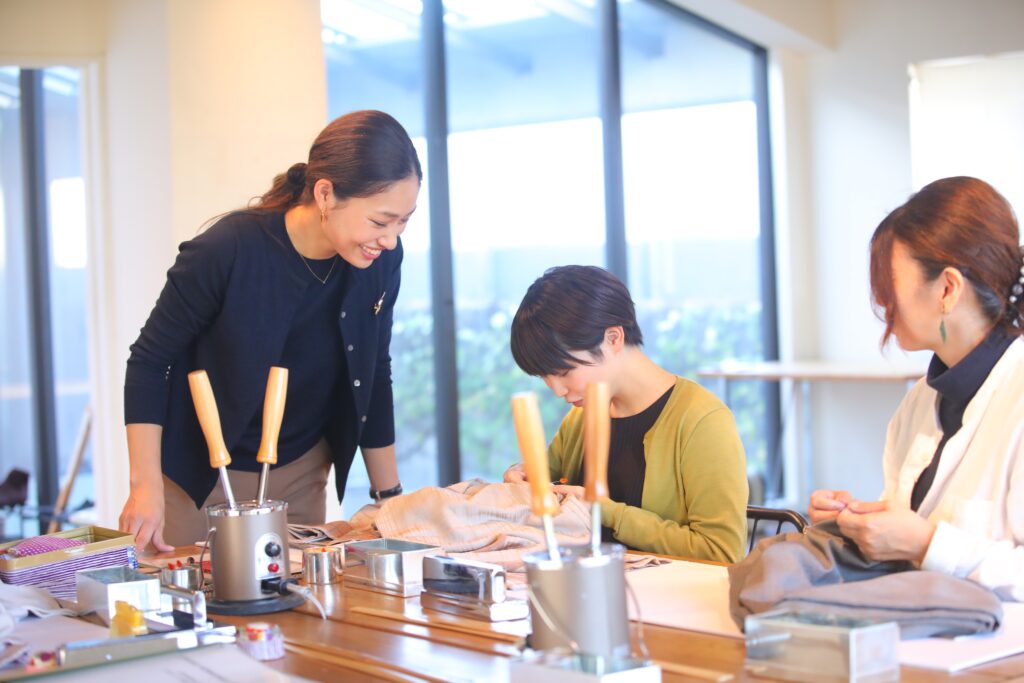In the world of kimono sewing, there are still many people who use kujira-shaku, and I am one of them.
In this article, I would like to explain how to writ Kujira-shaku without using the kanji characters for “尺(shaku),” “寸(sun),” and “分(bu).”
Basics of Kujira-shaku Scale
Kujira-shaku Units and Readings
厘:ri
分:bu
寸:sun [sún]
尺:shaku
丈:jou
*The Hepburn system is used for Japanese romanization.
Relationship of Each Unit
In the Kujira-saku scale, “分 (bu)” is the standard.
1/2 bu = 5 ri
1 bu : Standard
10 bu = 1 sun
100 bu = 10 sun = 1 shaku
1000 bu = 100 sun = 10 shaku = 1 jou
It is easy to understand if you have a kujira-syaku monosashi (ruler).
Please take a look at our actual size kujira-shaku monosashi document #9.
You can download it from the kimono documents list.
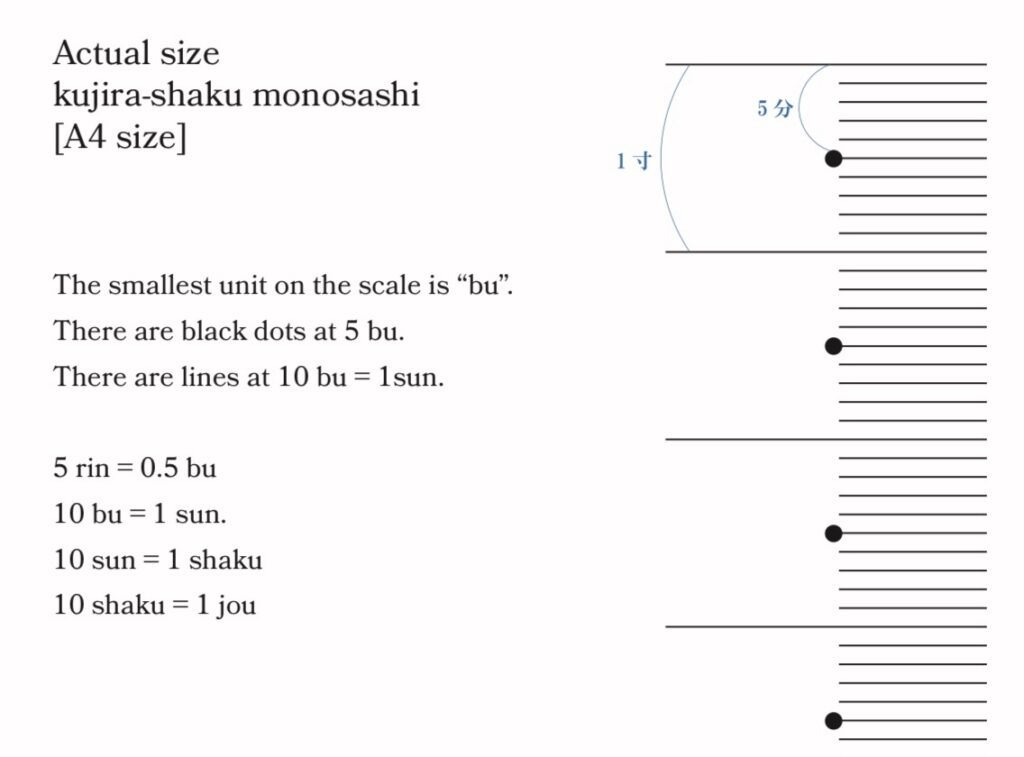
How to Express the Kujira-shaku Scale Using Only Numbers
When expressing the kujira-shaku scale using only numbers, “分(bu)” is used as the standard.
5ri= 0.5
1bu = 1
1sun = 10
1shaku = 100
For example, it is written “4 shaku 3 sun 5 bu = 435”.
And, “435” is read as “4 shaku 3 zun 5 bu.”
Other examples
3 shaku = 300
6 sun = 60
5 bu = 5
2 bu 5 ri = 2.5
and so on.
Kujira-shaku scale Related Articles
-
 Sewing note
Sewing note
Rules for Expressing the Kujira-shaku Scale Using Only Numbers
In the world of kimono sewing, there are still many people who use kujira-shaku, and I am one of them.In this […] -
 Sewing note
Sewing note
Conversion Formula Between cm and shaku
In kimono sewing, we use a unit called ” Kujira-shaku “.Here is the formula for converting cm to Kujira-shaku. […]
Other kimono sewing terms
-
 Sewing note
Sewing note
Rules for Expressing the Kujira-shaku Scale Using Only Numbers
In the world of kimono sewing, there are still many people who use kujira-shaku, and I am one of them.In this […] -
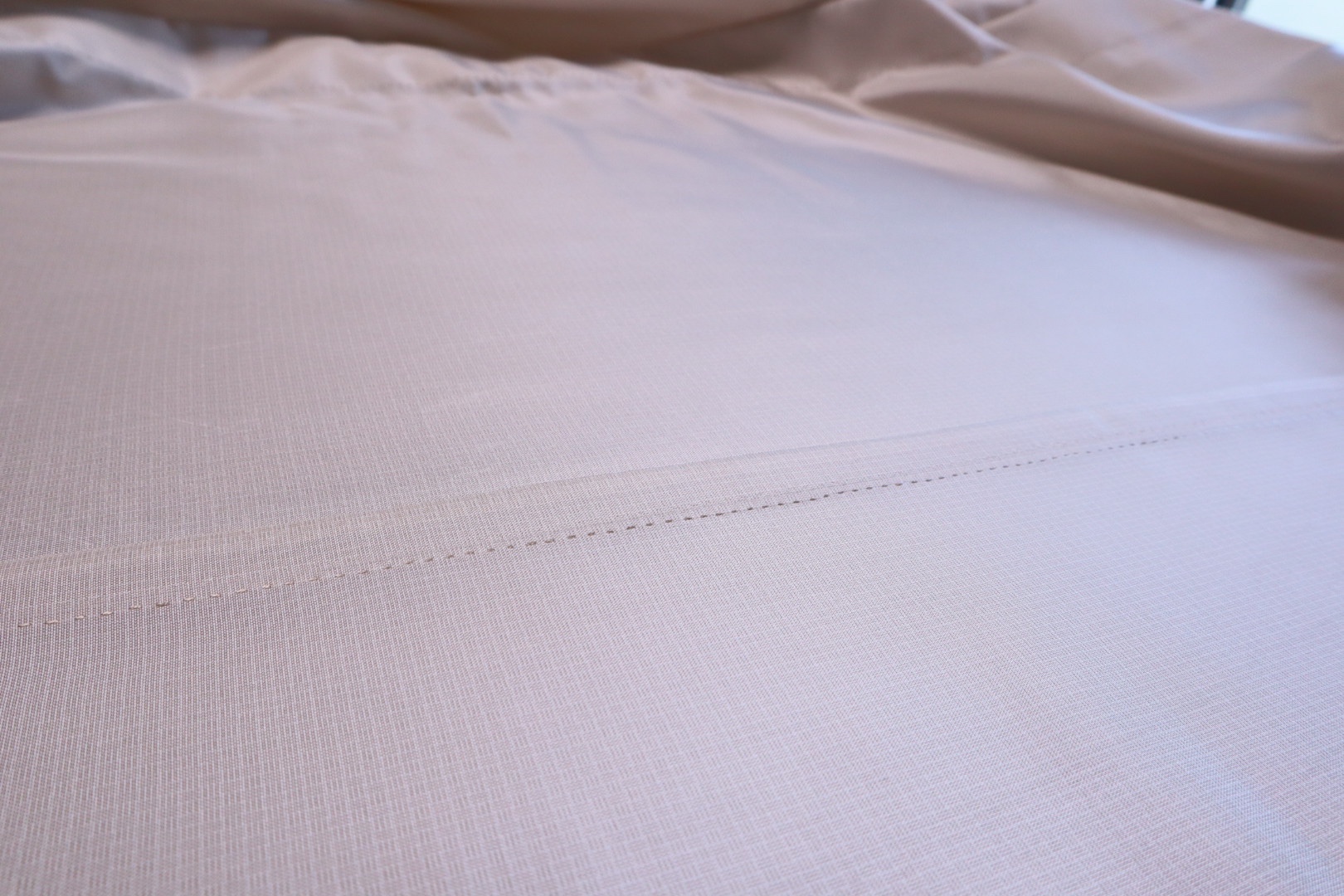 Sewing note
Sewing note
Difference between “Senui (背縫い)” and “Sechushin (背中心)” : Kimono Sewing Terms Glossary
The words used for sewing a kimono and the words used for wearing a kimono are similar but definitely refer to […] -
 Sewing note
Sewing note
Conversion Formula Between cm and shaku
In kimono sewing, we use a unit called ” Kujira-shaku “.Here is the formula for converting cm to Kujira-shaku. […] -
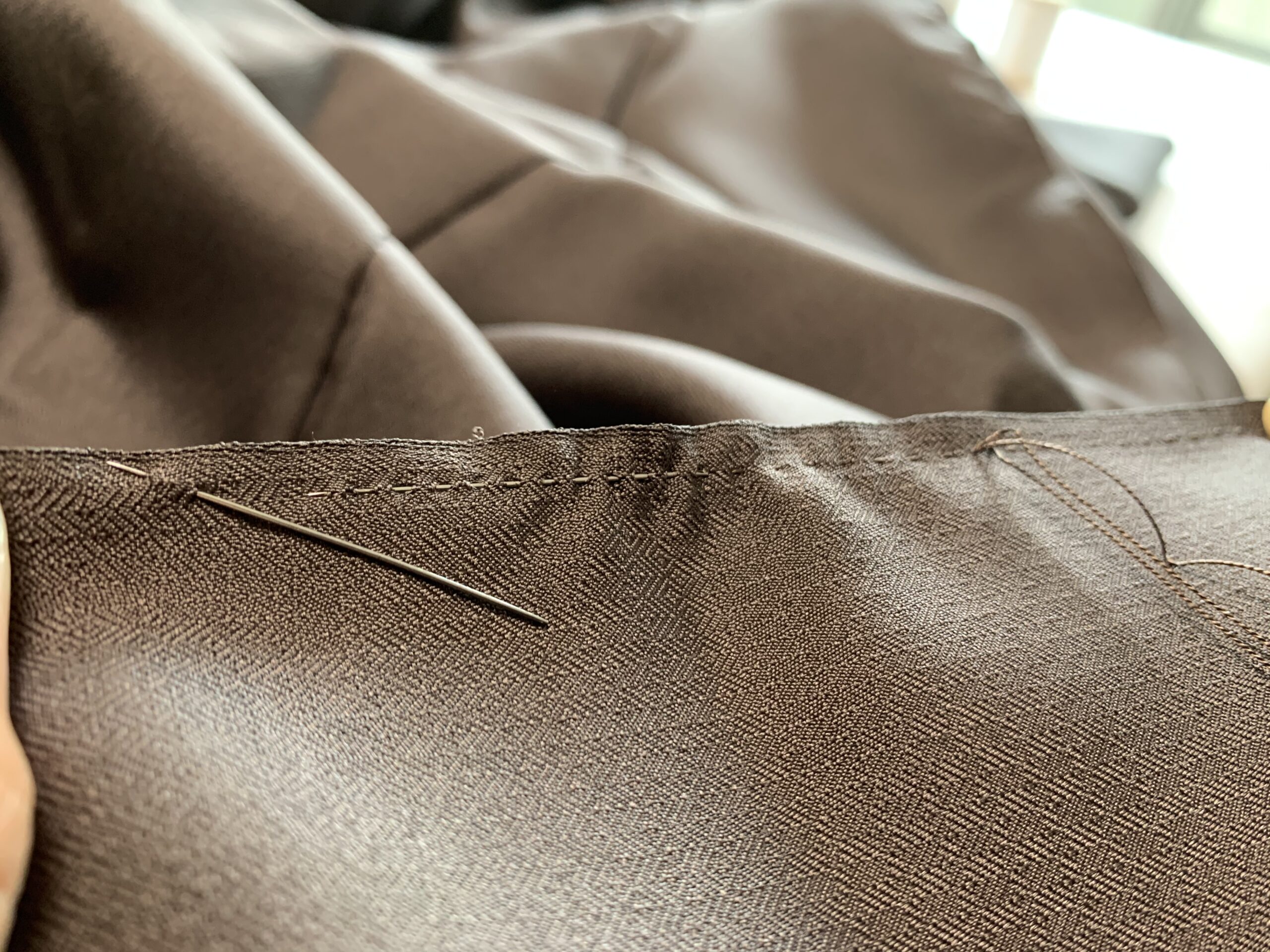 Sewing note
Sewing note
Single Thread and Double Thread : Kimono Sewing Terms Glossary
WASAI, the traditional way of sewing kimono, is done by hand without using a sewing machine. Here, I explain t […] -
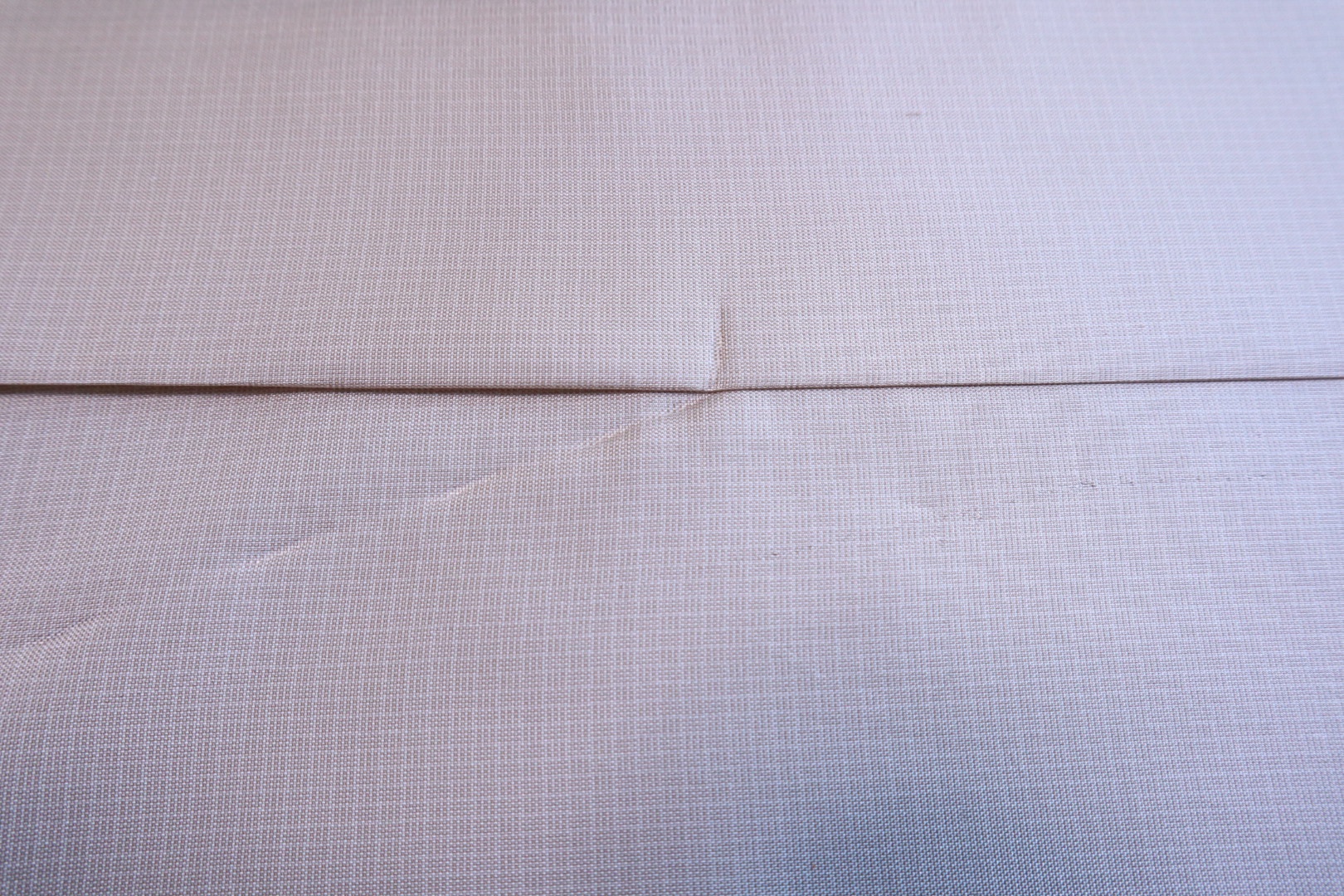 Sewing note
Sewing note
What is “ Kise ”:Kimono Sewing Terms Glossary
Closed seams and open seams are the two most common types of seams used in sewing, not only for kimonos, and a […] -
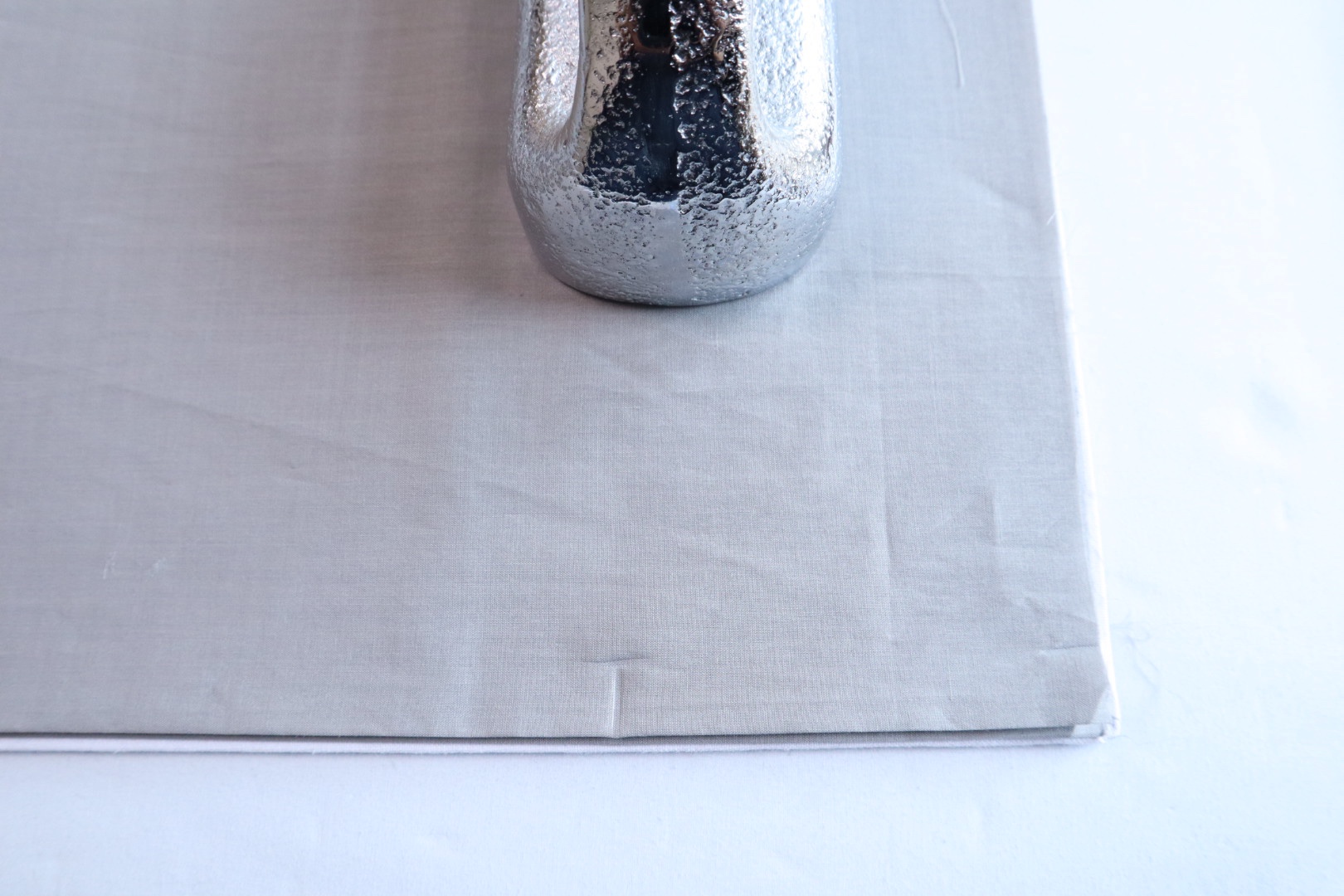 Sewing note
Sewing note
T and V marks are useful to know when sewing kimonos : Basics of Kimono Sewing -Marking-
In kimono sewing, which does not use patterns, T and V marks are used as landmarks for marking.In this time, I […]
Online store
We sells the basic kimono sewing tools recommended by professionals.
Let’s have fun sewing kimonos
with M KIMONO!
You can sew kimono anytime, anywhere.
Here is an environment where you can learn kimono sewing wherever you are.
Click here for details >>> https://mkimono.tv/en/
